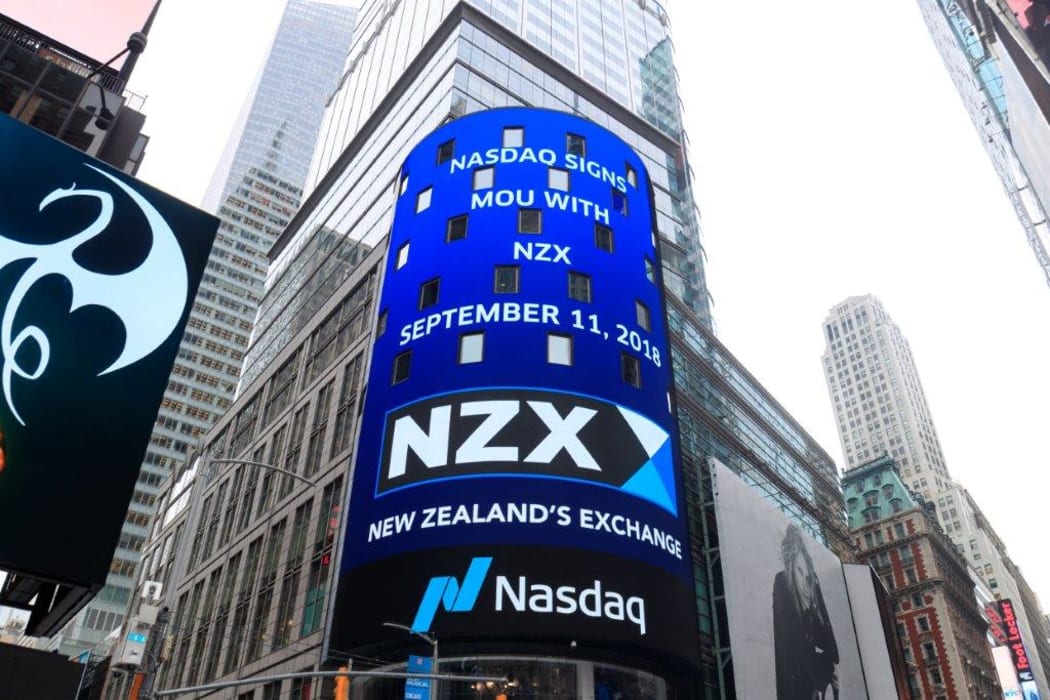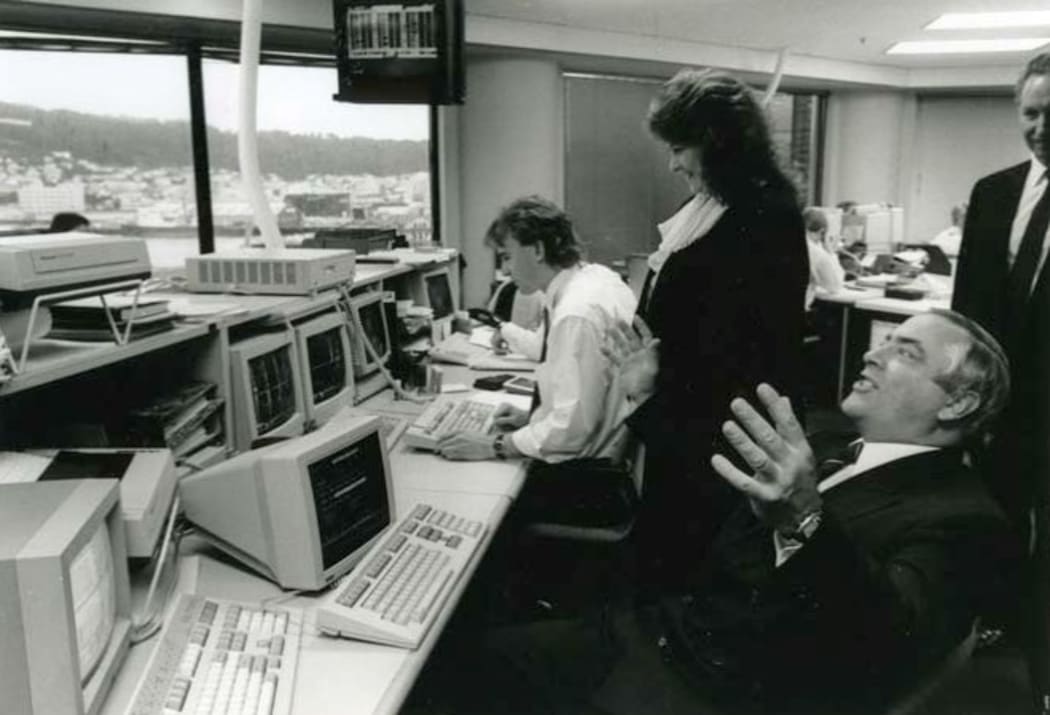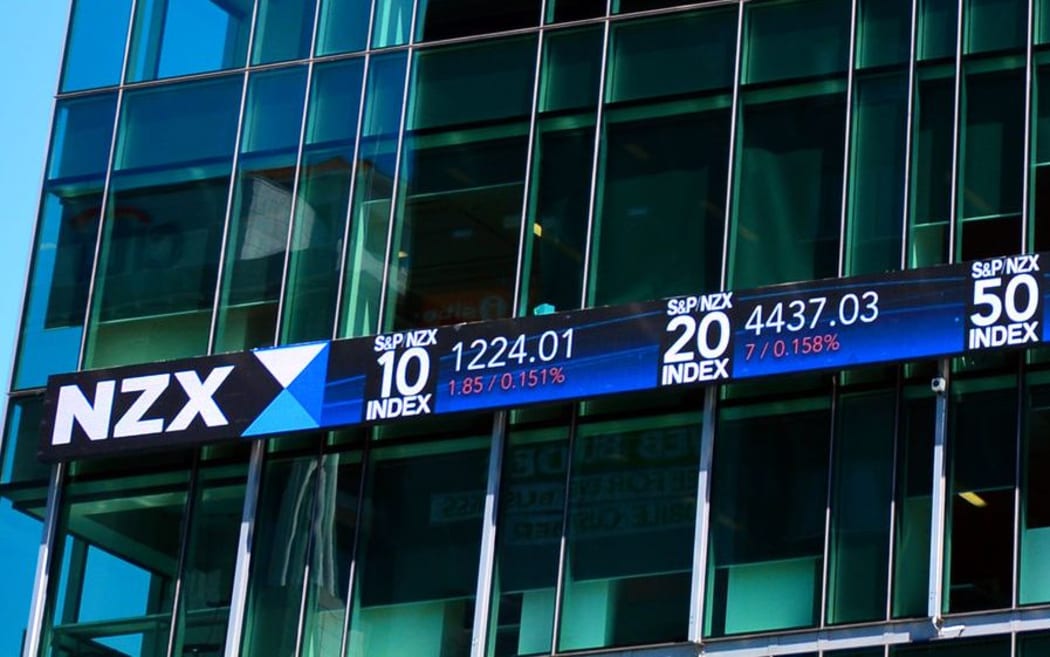The NZX turned 150 this year and the wrinkles are starting to show.
Companies like Xero have been jumping the fence for what they hope are greener pastures overseas. And other companies have been tempted away by private equity companies flush with cash, or by cheap bank lending, rather than listing on our stock exchange.
At the end of 1990, there were a total of 217 companies listed on the New Zealand stock exchange, but now that’s dropped off to 132. And we’ve only been seeing two or three new company listings each year.
Subscribe to Two Cents' Worth for free on Apple Podcasts, Spotify, Stitcher, RadioPublic or wherever you listen to your podcasts

Photo: Supplied / NZX
Not such golden times, although the origins of our stock market are in the goldrush of the 1860s.
“The first selling of shares was in Dunedin for banks,” said Wellington-based historian David Grant who wrote a book on the history of the New Zealand stock exchange called Bulls, Bears & Elephants.
“Banks were set up to process all the winnings from the alluvial gold in Gabriel’s Gully and other parts of Otago. They had to get money to set up the banks and (the banks themselves) would sell shares.”
But he said a stock ‘exchange’ really flourished in Thames in the late 1860s in gold mining company stocks. He tells of the shares being sold on a street corner there, with people coming from as far afield as Australia to get in on the action.
But long gone are the days of selling shares on a street corner, or brokers yelling on the trading floor while “chalkies” frantically scribble up share price movements. Trading today is done electronically from the share brokers’ own offices and the NZX is a company listed on its own exchange.

Pre-1991 “Open Outcry” when screen trading was introduced Photo: Supplied
NZX chief executive Mark Peterson said the importance of a well-functioning public market is “huge” for the country’s growth. The public markets are an efficient way for companies to access money to grow, with the top 50 New Zealand stocks representing about 10 percent of New Zealand’s GDP, he said.
But getting Kiwis interested in the stock market here is a challenge, despite reasonable returns over the last decade.
“If you compare the stock market with the value of our housing market, we're looking at $1.2 trillion dollars in the housing market, and only $150 billion or so in the stock market and in other countries that number is more equal,” said Two Cents’ Worth panelist Bernard Hickey of Newsroom.

Photo: RNZ / Dan Cook
The Government’s partial sale of energy companies like Mighty River Power helped bring new investors into the market, as has KiwiSaver. Cheaper online investment platforms have also helped. But there are challenges - one of which is the Aussies.
“They’ve (the Australian stock exchange) set up an office in Auckland and they're going around unlisted New Zealand companies trying to convince them that they need to list on a stock exchange and if they're going to list they should list on the Australian exchange,” said Milford Asset Management co-founder Brian Gaynor.
He said a lack of brokers and analysts compared to Australia as well as a lack of diversity on the NZ exchange is hindering us.
Hammerforce is an exciting Kiwi start-up company. It developed a new way of using high pressured air to power mechanical devices like nail guns. While it doesn’t rule out listing on the NZX or elsewhere one day, it has not done so yet - despite having former NZX chair Simon Allen on its board.
“Hammerforce is still in the start-up phase. So, it's just not the right time”, chief executive Andy Coster said.
“Over the past three years, we've raised nearly $22 million. And that's come from private investment, essentially through private networks, which has enabled us to do lots of things including attracting a high-calibre team and board to get the business to the stage it’s at now.”
Accounting software company Xero is a pin-up Kiwi firm. However, it listed on the NZX, then co-listed in New Zealand and Australia, before subsequently moving its main listing just to the Australian exchange. The key reasons it cites for this include getting access to a larger market, enabling investors to buy and sell shares in bigger volumes more easily and having more global analysts and brokers covering it.
Then there are the companies like Tegel, TradeMe and Goodman Fielder who left the NZX when private equity firms snapped them up.

Photo: Supplied
NZX’s Peterson said it is a competitive market, but there is a role for all capital types, and the like of private equity can be good “staging posts” for companies before they list on the exchange.
Chief executive of investment and advisory firm Jarden Securities, James Lee, said bringing new companies onto the local exchange right now is tough, right around the world.
“What you've seen over the last, probably six years, is because money has got so cheap, bank debt has been the easiest point of funding. So, when you’ve got a capital market which relies on providing debt or equity from other sources, apart from banks, that does lead to extended periods where it feels quite challenging.”
But Lee said things are changing and the NZX has had a relatively busy year. He believes the cycle we have been through for the last decade is coming to an end.
New Zealand King Salmon is a company that has done well on the NZX. Its chief executive Grant Rosewarne believes that if you have a strong, easily understood business proposition, raising money in New Zealand is no problem.

Grant Rosewarne, CEO NZ King Salmon Photo: Supplied
“Every Kiwi has the option to buy our shares listed on the NZX, that has an amazing impact on how people perceive us. We want to be as Kiwi as we possibly can,” he said.
There are plans afoot to spark new life in our capital markets. Mark Peterson said the NZX’s focus now is all about growth and it has already done things like reducing its equity boards from three down to one, simplifying its listing rules and getting back to core markets.
An industry-led working group kicked off by NZX and the Financial Markets Authority released a 10-year ‘vision and growth’ agenda in September called Growing New Zealand’s Capital Markets 2029, also aimed at getting things moving.
Peterson said this focuses on optimising KiwiSaver, looks at tax and regulatory settings, product and innovations that the exchange can carry out, and how the market itself is marketed.
“It also looked at some of the things that the ecosystem - the broader market - could do too. It looked at innovative product and at the opportunity around infrastructure and assets that are held in local authorities, or still under government ownership. So, it really took a broad sweep across the market with a view to creating, healthy, growing flourishing capital markets,” Peterson said.
Brian Gaynor doesn’t think we’ve found the “magic answer” just yet.
“It's not as if people have given up. I certainly hope that we can regenerate the share market like it used to be and I'm not looking back to the golden days, but we need a stronger share market. We need to be able to fight back the Australians,” he said.
Grant Rosewarne believes the Capital Markets 2029 report offers the pieces needed to rejuvenate the NZX, with good suggestions on things like reducing the regulatory burden for smaller companies.

Photo: 123RF
But, the NZX can’t do it alone. Peterson said the capital markets community, the regulators and the government all need to be on their game – particularly to ensure that the regulatory burdens and obligations don’t turn companies off listing.
Rosewarne seems to agree: “The government needs to have a strategy around this, it needs to make it happen,” he said.

